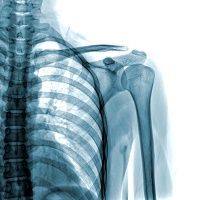- Revenue Cycle Management
- COVID-19
- Reimbursement
- Diabetes Awareness Month
- Risk Management
- Patient Retention
- Staffing
- Medical Economics® 100th Anniversary
- Coding and documentation
- Business of Endocrinology
- Telehealth
- Physicians Financial News
- Cybersecurity
- Cardiovascular Clinical Consult
- Locum Tenens, brought to you by LocumLife®
- Weight Management
- Business of Women's Health
- Practice Efficiency
- Finance and Wealth
- EHRs
- Remote Patient Monitoring
- Sponsored Webinars
- Medical Technology
- Billing and collections
- Acute Pain Management
- Exclusive Content
- Value-based Care
- Business of Pediatrics
- Concierge Medicine 2.0 by Castle Connolly Private Health Partners
- Practice Growth
- Concierge Medicine
- Business of Cardiology
- Implementing the Topcon Ocular Telehealth Platform
- Malpractice
- Influenza
- Sexual Health
- Chronic Conditions
- Technology
- Legal and Policy
- Money
- Opinion
- Vaccines
- Practice Management
- Patient Relations
- Careers
Big Pixels
Using automated, digitized pattern recognition in medicine is evolving from a decision support tool to a standalone tool. Once again, advances in technology are rapidly outpacing the legal, regulatory, and socioeconomic rules affecting adoption and penetration of the big pixel industry.

Big data and analytics in medicine is hot. But, big pixels, i.e. pattern recognition by digitizing medical images, like a pathologic slide, an X-ray of your shoulder, a mammogram or a brain scan, and using them to assist with or make a diagnosis, has an even bigger future.
â— Medical Informatics: Is an interdisciplinary scientific field of research that deals with the use of Information and Communication Technologies and Systems for clinical healthcare, for more accurate and faster service to people.
â— Pattern Recognition (PR): Automated analysis of collected attributes of objects, events, etc. to classify them into categories.
â— Medical Pattern Recognition: All PR Techniques in decision support and treatment of illnesses.
The present state of the art helps doctors. The technologies are decision-support tools. In the future, they may be standalone diagnostic tools. That will present some issues:
1. How do we educate and train radiologists, pathologists, and others highly dependent on pattern recognition skills?
2. How do we reimburse for doing the data analysis and recommendations?
3. What are the medicolegal and product liability issues?
4. Will this further disintermediate doctors from patients interested in self-diagnosis and practicing DIY medicine?
5. How accurate will they be?
6. What are the costs and benefits?
7. How will mobile access affect availability of the tools?
8. How will we insure data security and confidentiality?
9. What other data is necessary besides the images to improve accuracy of diagnosis and how will it be integrated into the diagnostic algorithm?
10. As the space between the data and the doctor widens, who will fill it?
Using automated, digitized pattern recognition in medicine is evolving from a decision support tool to a standalone tool. Once again, advances in technology are rapidly outpacing the legal, regulatory, and socioeconomic rules affecting adoption and penetration of the big pixel industry. When the gaps close, though, patients should benefit.
